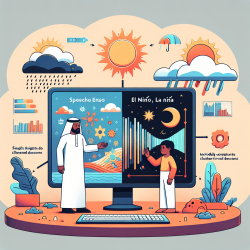The Global Integration Method (MIG) represents a significant advancement in the treatment of Autism Spectrum Disorder (ASD). Developed by Renato Guimarães Loffi and his team, MIG is an interdisciplinary, family-oriented intervention that addresses sensorimotor reactivity in addition to socio-communication. The method incorporates both bottom-up and top-down strategies to create accurate, flexible, and context-sensitive internal predictive models.
MIG’s theoretical rationale is grounded in the predictive coding impairment and embodied cognition hypotheses. Predictive coding suggests that the brain constantly builds predictions about the state of the world and seeks to minimize discrepancies between these predictions and sensory inputs. In autism, deficits in predictive coding can result in poorly predictive internal models, leading to socio-communicational difficulties and atypical environmental reactivity.
One of the key components of MIG is the flexible therapeutic suit, MIG Flex, based on myofascial trains. This suit provides postural stabilization, freeing up cognitive resources for socio-cognitive learning. The suit is designed to improve motor functions, which are often compromised in individuals with autism. By addressing motor stability, MIG Flex aids in the development of social skills through improved socio-motor synchronization.
In practice, MIG integrates several intervention strategies within a naturalistic environment known as the "City of Tomorrow." This immersive therapeutic space uses structured cognitive models of learning and reward systems to engage children in activities that mimic real-life scenarios. These activities are designed to develop cognitive schemas and improve socio-communicational skills.
For practitioners, implementing MIG can significantly enhance the outcomes for children with autism. The method’s interdisciplinary approach ensures that all aspects of a child’s development are addressed, from motor skills to socio-communicational abilities. By involving families as co-therapists, MIG also promotes the generalization of therapeutic practices from the clinic to the home environment.
Encouraging further research into MIG and its components can provide deeper insights into its efficacy and potential improvements. Practitioners are urged to stay informed about the latest developments in autism treatment and consider integrating data-driven, evidence-based approaches like MIG into their practice.
To read the original research paper, please follow this link: Theoretical–Methodological Foundations for the Global Integration Method (Método de Integração Global—MIG) in the Treatment of Autism Spectrum Disorder.










